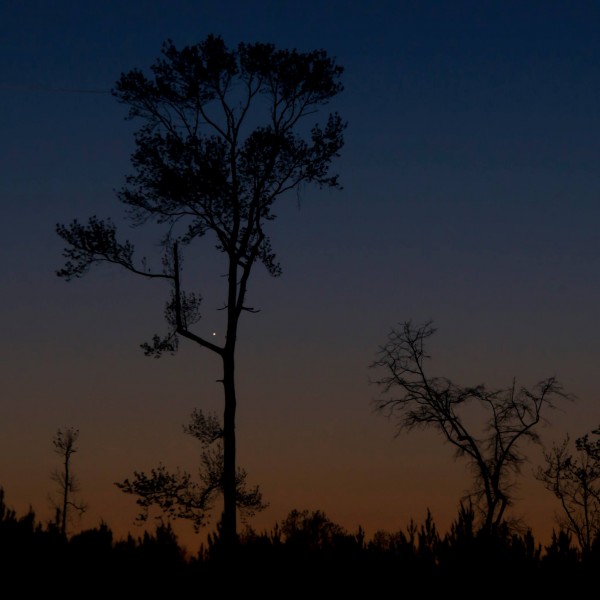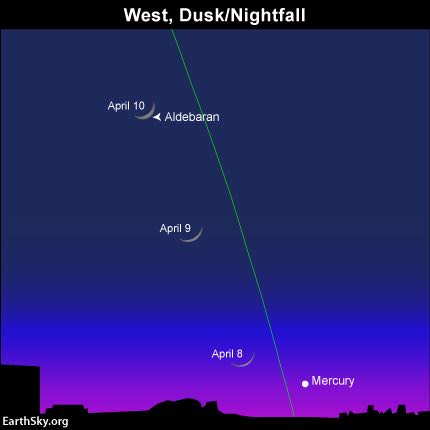Tonight – April 8, 2016 – if you live in the Northern Hemisphere, you have a good chance of catching the young waxing crescent moon and planet Mercury in your western sky after sundown. Find an unobstructed horizon in the direction of sunset, and watch for the moon and Mercury to pop out over the sunset point on the horizon some 45 to 60 minutes after the sun goes down. Binoculars might be helpful for spotting Mercury, and also for viewing earthshine on the dark side of the moon!
Spring evenings present the best time to spot the young moon and Mercury, the solar system’s innermost planet. Since the March equinox is the Northern Hemisphere’s spring equinox, April 2016 provides northerly latitudes its best evening apparition of Mercury for this year.
For temperate latitudes in the Southern Hemisphere, where it’s now autumn, April evenings are unfavorable for spotting the young evening crescent and Mercury. But you still might catch them, especially with a camera, as Helio C. Vital did on April 5, 2016 from Rio de Janeiro, Brazil. See the photo below:

Why is Mercury so much harder to see now from the Southern Hemisphere? As you can see from the chart at the top of this post, the ecliptic – or path of the sun, moon and planets – makes a steep angle with the horizon now, as seen from our northerly latitudes. But from the Southern Hemisphere, the angle is at its narrowest, placing Mercury low in the sky when the sun goes down.
For instance, consider two localities that reside close to the same meridian: 75o west longitude: Philadelphia, PA (40o north latitude) and Valdivia, Chile (40o south latitude). At Philadelphia on April 8, 2016, the moon goes down about 1 hour and 40 minutes after sunset, in contrast to about an hour after sunset at Valdivia, Chile. Also, at Philadelphia, Mercury stays out for about 1 hour and 20 minutes after sunset, whereas at Valdivia, Mercury plunges beneath the horizon some 30 minutes after sundown.

At northerly latitudes, we’ll have plenty of opportunity to view Mercury after sunset for the next several weeks.
Day by day, Mercury will loom higher up at sunset, and will stay out longer after sundown. When Mercury reaches its greatest evening elongation from the sun on April 18, it’ll set a whopping 1 hour and 45 minutes after the sun at mid-northern latitudes.
So on any clear evening, as dusk is giving way to darkness, look for Mercury to appear over the sunset point on the horizon, staging its best showing of the year at northerly latitudes!
Bottom line: In the Northern Hemisphere? If so, you have a chance of catching the young moon and planet Mercury in the west after sundown on April 8, 2016, and in the evenings that follow.












